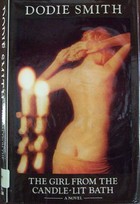Smith, Dodie. The Girl from the Candle-lit Bath. London: W.H. Allen, 1978. Print.
 Smith’s most famous book might be her 1956 The One Hundred and One Dalmations, thanks to the Disney movie adaptation. Her best book, though, must certainly be I Capture the Castle. I love it so much that I am trying to find the rest of her books and check to see if I’m right.
Smith’s most famous book might be her 1956 The One Hundred and One Dalmations, thanks to the Disney movie adaptation. Her best book, though, must certainly be I Capture the Castle. I love it so much that I am trying to find the rest of her books and check to see if I’m right.
I read The Town in Bloom last year, according to my notes, but my mind is totally blank on it (more motivation for writing these records). The Girl from the Candle-Lit Bath turned out, much to my surprise, to be a mystery novel originally published in 1978. I would say that it’s set in a slightly earlier England, with a young wife mystified by the machinations of her new husband. It’s not really a thriller and not exactly a murder mystery, but there is certainly suspense and believable action. I liked the main character and sympathized with her. I’m not sure I’d recommend the book, but I enjoyed it.
The title, incidentally, comes from the main character’s fifteen minutes of fame as the young woman seen tastefully naked in a soap commercial. Somewhat to her dismay, she is continually recognized in public, although that doesn’t seem to be related to the rest of the story much.







